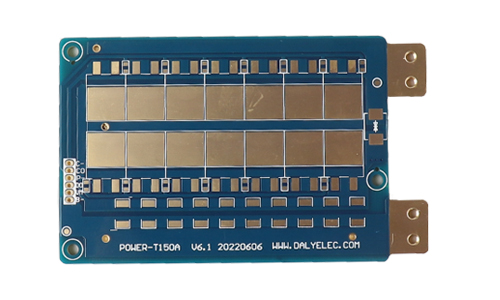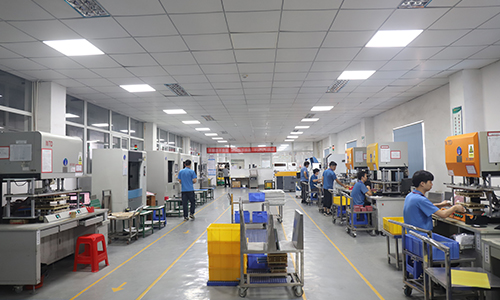
With the rapid development of new energy vehicle technology, the application of embedded systems in new energy vehicles has become more and more extensive.
New Energy Vehicles PCB Product Introduction
With the rapid development of new energy vehicle technology, the application of embedded systems in new energy vehicles has become more and more extensive. As a core component, the embedded copper block new energy vehicle PCB (Printed Circuit Board) undertakes many key functions such as control, communication and power management. The following is a detailed introduction to the embedded copper block new energy vehicle PCB product.
 |
 |
1.Product Overview
The embedded copper block new energy vehicle PCB is a high-performance circuit board designed for new energy vehicles, integrating multiple functional modules such as battery management system (BMS), motor controller, on-board charger and on-board infotainment system. This PCB has better heat dissipation performance and current carrying capacity through embedded copper block technology, and can operate stably in complex automotive environments.
2. Product Features
2.1 High Reliability
The use of high-quality substrates and advanced manufacturing processes ensures the reliability of PCBs in harsh environments such as high temperature, high humidity and high vibration.
2.2 Excellent Heat Dissipation Performance
The embedded copper block technology significantly improves the heat dissipation capacity of the PCB to adapt to the high power requirements of new energy vehicles.
2.3 High Current Carrying Capacity
The embedded copper block can carry a larger current, reduce the current density of the circuit board, and improve the overall performance of the system.
2.4 High anti-interference ability
Through multi-layer design and shielding technology, the anti-electromagnetic interference ability of PCB is improved to ensure the stability and accuracy of signal transmission.
2.5 High integration
Integrating multiple functional modules reduces the complexity and volume of the system and improves the overall performance and reliability of the system.
3. Technical Parameters
| Number of layers | 3 | Minimum line width and line spacing | 0.8/0.8MM |
| Board thickness | 3.0mm | Minimum aperture | 1.2 |
| Board material | FR4+copper substrate | Surface treatment | 2u immersion gold |
| Copper thickness | 2OZ for inner and outer layers | Process points | embedded copper substrate |
4. Application Areas
4.1 Battery Management System (BMS)
Used to monitor and manage the status of the battery pack to ensure the safety and efficient operation of the battery.
4.2 Motor controller
Used to control the operation of the motor and provide efficient power output and energy recovery functions.
4.3 On-board charger
Used to convert external power into voltage and current suitable for battery charging, supporting fast charging and smart charging functions.
4.4 In-vehicle infotainment system
Used to provide functions such as navigation, entertainment and communication, and improve driving experience and passenger comfort.
4.5 Body control module
Used to control body functions such as lights, air conditioning, door locks, etc., to improve the intelligence level of the vehicle.
5. Manufacturing Process
5.1 Circuit Design
Use EDA tools to design and route circuits to ensure the rationality and reliability of the circuit.
5.2 Material Selection
Select high-quality substrates and copper foils to ensure the performance and reliability of the PCB.
5.3 Etching
Perform etching to form circuit patterns.
5.4 Vias
Drill holes and perform electroplating to form vias.
5.5 Lamination
Laminate multiple layers of copper foil with substrates to form a multi-layer PCB.
5.6 Embed copper blocks
Embed copper blocks at key locations to improve heat dissipation and current carrying capacity.
5.7 Surface Treatment
Perform surface treatment such as HASL, ENIG, etc. to improve the welding performance and corrosion resistance of PCBs.
5.8 Welding
Weld components to complete assembly.
5.9 Testing
Perform electrical and functional tests to ensure product quality.
6. Quality Control
6.1 Raw Material Inspection
Ensure that the quality of substrates and copper foils meets the standards.
6.2 Manufacturing Process Control
Strictly control each process to ensure product consistency and reliability.
6.3 Finished product testing
Electrical performance test, functional test and environmental test are carried out to ensure that the product meets the design requirements.
 |
 |
7. Conclusion
Embedded copper block new energy vehicle PCB is widely used in various systems of new energy vehicles due to its high reliability, excellent heat dissipation performance and high current carrying capacity. Through reasonable design and strict manufacturing process, efficient and reliable power supply and control solutions can be achieved to meet the diverse needs of new energy vehicles.
I hope this product introduction will be helpful to you!
FAQ
1.Q: When can I get a quotation after I provide Gerber, product process requirements?
A: Our sales staff will give you a quotation within 1 hour.
2.Q: How many employees do you have in your factory?
A: More than 500.
3.Q: How to solve the interlayer alignment error issue in automotive PCB production?
A: Interlayer misalignment errors are usually caused by inaccurate positioning systems and can be resolved by improving positioning accuracy.
4.Q: Does your company have a certification standard system related to the automotive industry?
A: We possess the EU IATF16949 certification.